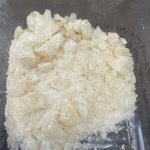The name vodka comes from the Slavic word voda or vodka, which means water. Some people say that vodka is tasteless or every vodka tastes the same, but they can’t be wrong anymore. If you are one of those people, I recommend that you read this post and participate in a vodka tasting; Hopefully you will understand the differences between the many brands and learn to appreciate the mind. Because it is a neutral mind, devoid of color and odor, vodka can be distilled from virtually any fermentable ingredient. While some Eastern European vodkas are still made from potatoes and corn, most high-quality imports and all vodka made in the United States are distilled from grains, such as wheat.
But when the wine became sour, there was a proliferation of bacterial cells that produced lactic acid. Pasteur suggested that gently heating the wine to about 120 ° F would kill the bacteria that produced lactic acid and mature the wine well. Pasteur’s book, Etdues sur le Vin, published in 1866, testified to two of his great passions: the scientific method and his love for wine. It sparked a new French revolution, one in winemaking, as Pasteur suggested that further cleaning was needed to kill bacteria and that it could be done with heat. Some wine producers were shocked by the idea, but solved the industrial problem. After his early education, Pasteur went to Paris, studied at the Sorbonne, and then started teaching chemistry while still a student.
Of particular concern was the deterioration of wine and beer, which caused major economic losses and affected France’s reputation for excellent vintage wines. Winegrowers wanted to know the cause of I’amer, a condition that destroyed the best robberies. Pasteur looked at the wine under a microscope and noted that when it was well aged, it contained small spherical yeast cells.
The alcohol flavor comes from oils that dissolve in alcohol and evaporate with alcohol during distillation. The lower the test that comes out of the alembic, the more oils are transported and the more flavor a ghost will have. The higher the test that comes out of the alembic, the fewer oils are transported and there is less flavor. Barley, rye and wheat grains are traditional raw materials, high-quality basic materials for vodkas and potatoes. Light, crispy and dry vodkas are usually made from barley, sweeter versions of rye and structured with a lot of wheat text, while potatoes produce vodka with a unique creamy texture. Although vodkas are by definition a neutral mind without color, taste or smell, there is ultimately a whole world of subtle nuances and textures that make certain vodkas certain drinkers.
The tightly closed bath can rest for 2-4 days because enzymes convert sugars into ethyl alcohol. And the remaining liquid heats up and the end result ranges from 30 to 40 percent alcohol . Vodka is distilled at least three times to remove impurities. Experts believe that more vodka is distilled, better is the quality. Traditionally, vodka is made from grain, with rye being the most common, combined with water and heating. Yeast is then added to the pulp, starting fermentation and converting sugars into alcohol.
At the end of the distillation process, pure demineralized water is added to reduce the alcohol content. The minimum legal force of EU ABV is 37.5%, but it is not uncommon to have vodkas up to 50% of ABV. Flavored vodkas became popular in the second half of the 20th century. vodka gifts for him Therefore, herbs, meadows, herbs and fruit essences can be added to the vodka after distillation. Pasteur established himself as a serious and hardworking chemist and was called to address some of the problems that hit the French beverage industry at the time.
